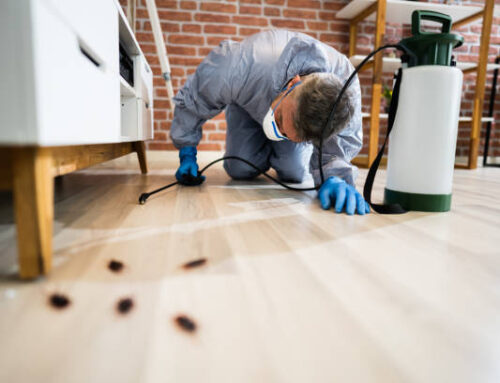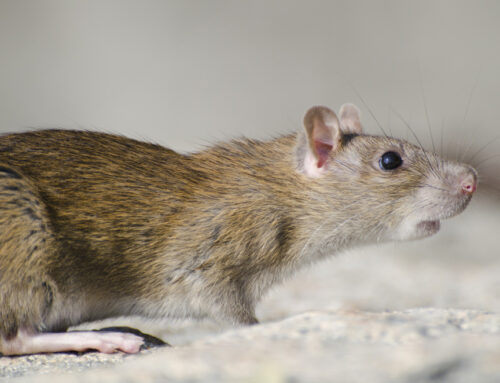As temperatures drop and daylight shortens, pests begin seeking warmth and shelter indoors. Winter may seem like a season of rest, but for household pests, it is a time of migration. Rodents, cockroaches, spiders, and termites quietly find ways inside homes, hiding behind insulation or within foundation gaps. A proper pest-proofing checklist ensures your property is ready before these intruders settle in.
Pest prevention during winter is not just about convenience; it is a matter of health, safety, and structural protection. The combination of insulation, indoor humidity, and stored goods creates ideal harborage points for overwintering pests. By preparing early, homeowners reduce infestations and minimize costly repairs later.
Below is a complete professional-grade winter pest-proofing checklist that highlights where to start, what to seal, and when to seek professional assistance for long-term protection.

Pest Control in Paterson, NJ
Inspect and Seal Structural Entry Points
The foundation and exterior walls are the first lines of defense. Rodents can fit through gaps smaller than a coin, while cockroaches can enter through cracks along utility lines or windowsills. Even tiny fissures in mortar or siding become passageways during winter migration.
A full structural inspection helps uncover these vulnerabilities before pests do. Prioritize the following:
- Foundation cracks and gaps: Seal holes or openings larger than 1/8 inch using weather-resistant caulk or cement filler.
- Doors and windows: Replace worn-out weather stripping and ensure no light passes through door thresholds.
- Utility penetrations: Check where pipes, cables, and gas lines enter walls and fill gaps with silicone or expanding foam.
- Vents and attic screens: Install fine mesh to block pests while maintaining airflow.
- Rooflines and soffits: Inspect for loose shingles or holes where rodents or birds could nest.
This step not only fortifies your home against pests but also improves energy efficiency. A tightly sealed structure keeps warm air in and unwanted visitors out.
Eliminate Food and Moisture Sources
Winter drives pests indoors not just for warmth but also for food and water. Crumbs, spills, and leaks become vital resources that sustain rodents, ants, and cockroaches through the colder months. Reducing these attractants makes your home far less appealing.
Focus on the following actions:
- Store pantry items securely: Keep dry goods in airtight containers and discard expired products.
- Clean under appliances: Hidden grease and crumbs under stoves and refrigerators draw roaches and ants.
- Fix leaks promptly: Check under sinks, behind toilets, and near dishwashers for moisture that can attract termites and cockroaches.
- Empty trash often: Use sealed bins and maintain regular disposal schedules.
- Declutter storage areas: Cardboard boxes and paper stacks create nesting sites for mice and spiders.
Moisture control is also crucial for termite prevention. Crawl spaces, basements, and attics should be well-ventilated to prevent condensation buildup. Homes that maintain dryness and cleanliness are naturally less inviting to winter pests.
Focus on High-Risk Rooms
Some parts of a home are more prone to pest activity due to temperature, food availability, or clutter. Targeting these high-risk rooms ensures early detection and prevention.
Common trouble spots include:
- Kitchens: Keep floors, counters, and sinks spotless. Do not leave pet food out overnight.
- Basements: Inspect for moisture, insulation gaps, and rodent droppings near storage areas.
- Attics: Check for nesting materials and seal around vents and ducts.
- Garages: Keep tools and supplies elevated off the floor and store firewood at least 20 feet from the home.
- Laundry rooms: Seal openings around washer and dryer vents, where insects often enter.
Regular inspection of these spaces during winter helps identify activity before it escalates. Even subtle signs, like gnaw marks or droppings, may indicate early infestations that need immediate professional attention.
Understanding these risk zones can also highlight when consistent maintenance matters most. The importance of quarterly pest control is that ongoing seasonal inspections prevent infestations from becoming entrenched. Professional monitoring during transitional seasons keeps homes one step ahead of pest behavior changes.
Address Rodent and Termite Prevention Together
Rodents and termites are particularly destructive during winter. Rodents gnaw through insulation and wiring, while termites can remain active indoors, feeding on structural wood in warm, hidden areas. Both require vigilant attention to prevent costly damage.
A few practical steps include:
- Check attic insulation: Look for burrow trails or droppings that signal rodent nesting. Replace compromised insulation promptly.
- Inspect crawl spaces: Termites thrive in moisture-rich environments. Keep these areas dry with dehumidifiers or vapor barriers.
- Trim vegetation: Ensure shrubs and tree branches do not touch your siding or roofline, as they serve as bridges for pests.
- Monitor wooden structures: Tap beams and floor joists to detect hollow sounds, which may indicate termite activity.
- Use steel mesh or copper wool: Block rodent access points near pipes or foundation vents where plastic fillers fail.
Rodent infestations pose health risks, while termite damage can compromise home stability. The most effective prevention combines exclusion, monitoring, and professional inspection. A yearly termite check and rodent-proofing service before winter greatly reduces risks.
For homeowners weighing maintenance costs, the financial benefits of early intervention are clear. Regular pest inspections save money because proactive monitoring protects your home from long-term repair expenses and structural loss.
Schedule a Professional Winter Pest Evaluation
Even with the best preparation, some pest activity remains undetectable without professional tools and experience. Trained specialists can identify signs of infestation behind walls, in insulation, or within crawl spaces that homeowners often miss.
A professional winter pest evaluation typically includes:
- A complete inspection of entry points and vulnerable zones
- Identification of active or potential infestations
- Recommendations for targeted exclusion or treatment
- Monitoring setup for early-warning detection
Scheduling this service before the coldest months ensures your home remains sealed and monitored throughout winter. Experts also help identify pest-specific risks unique to your region, such as ant colonies nesting in wall voids or rodents attracted to nearby fields.
Winter-proofing is not just a one-time task. It is an ongoing part of home maintenance. As buildings expand and contract with the seasons, small gaps can reopen. Professional follow-up confirms that seals remain intact and that preventive measures continue to perform as intended.
Guard Your Home This Winter
Protecting your home from seasonal pests takes foresight and consistency. If you want to ensure your property is fully prepared for the colder months ahead, contact E&G Exterminators for a detailed inspection and expert winter pest-proofing service.






